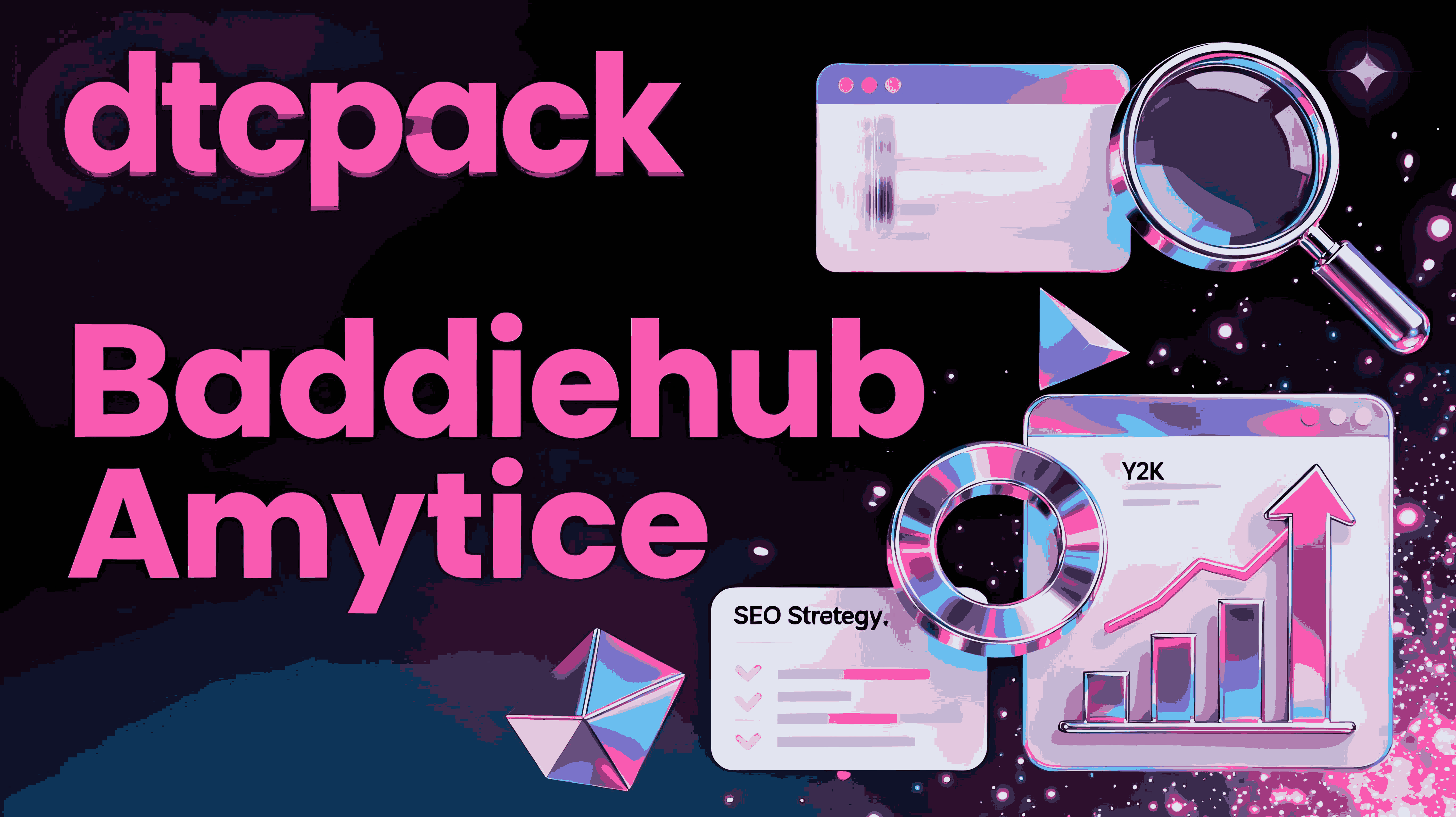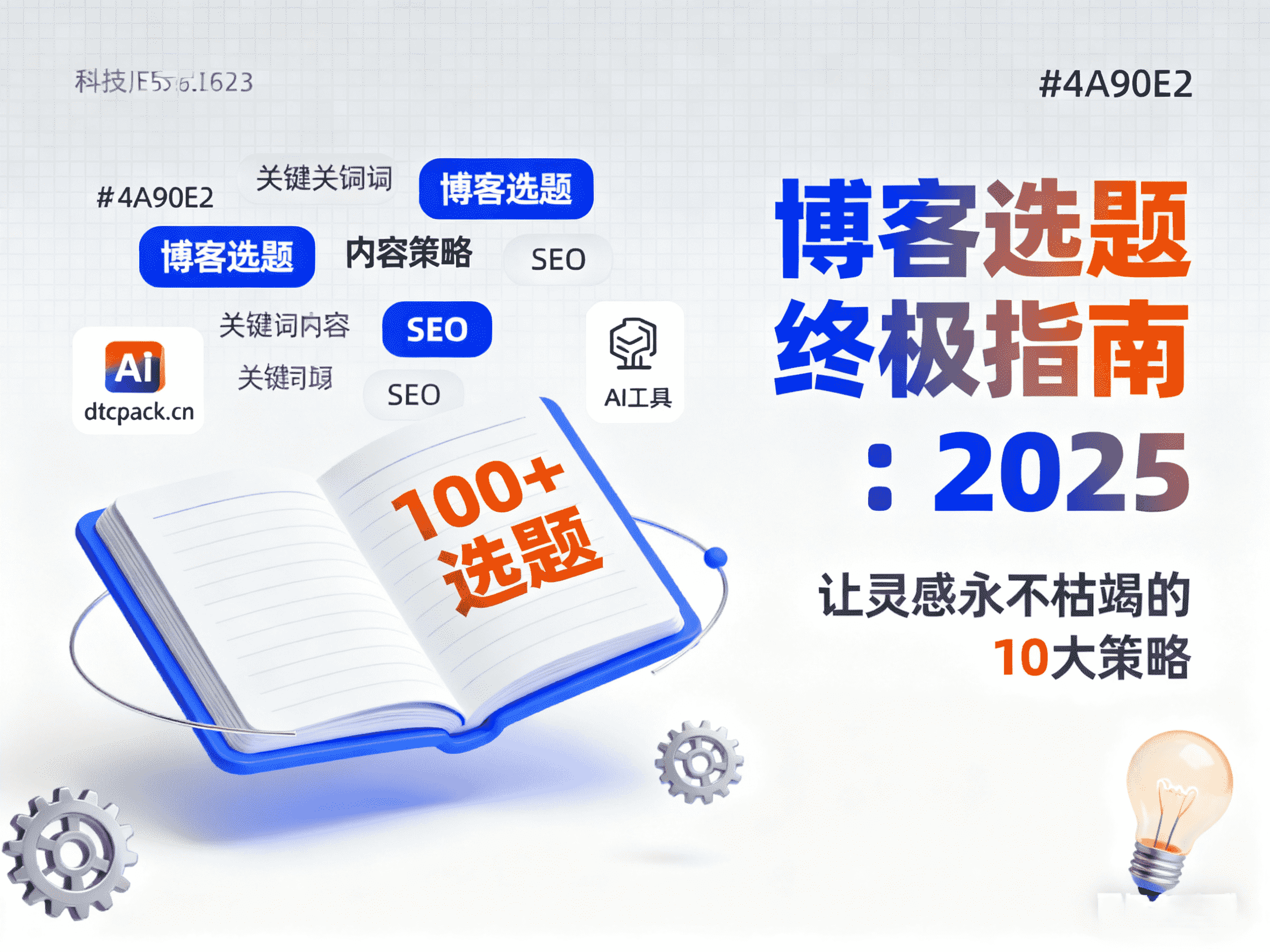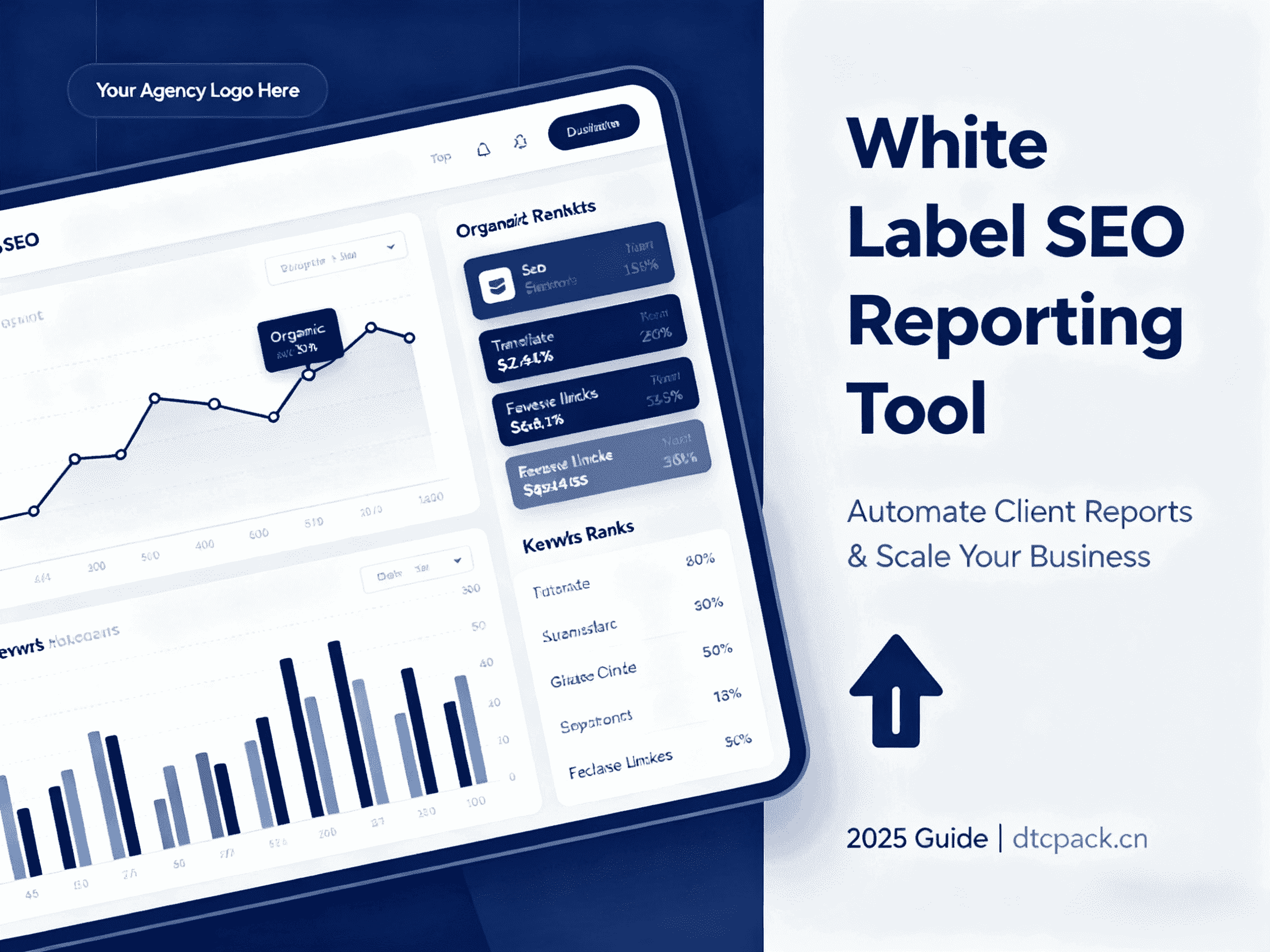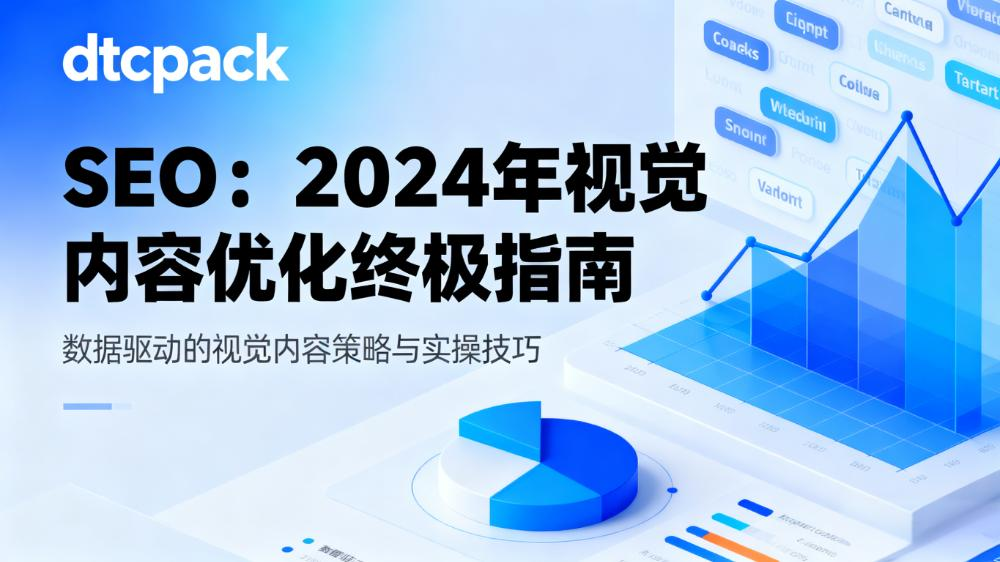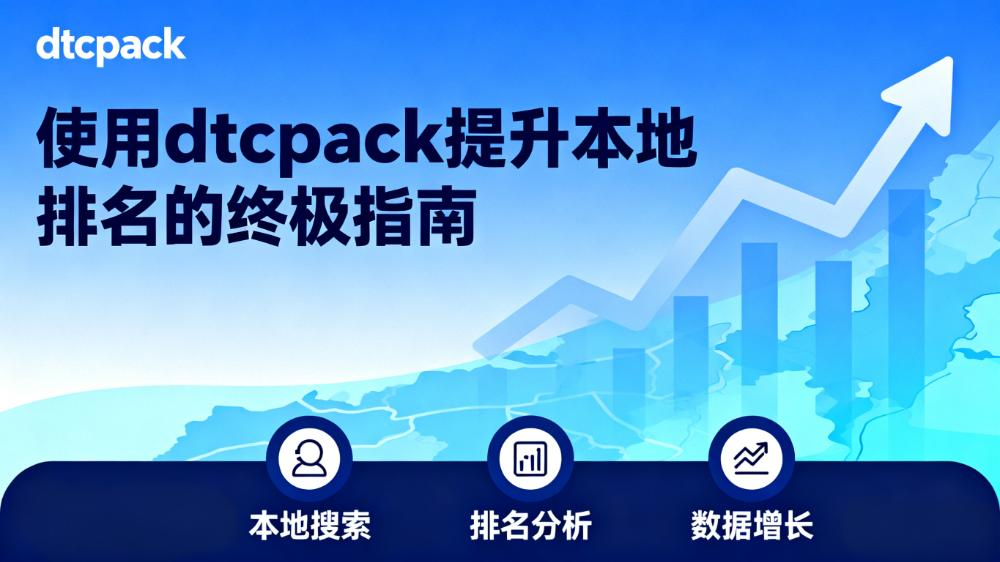In today's digital era, mastering traditional SEO alone is no longer enough. With evolving search behaviors, the rise of AI, and user-focused algorithms, digital marketers must now understand and leverage a broader range of optimization strategies: AEO, GEO, SXO, and AIO. These concepts are interconnected yet distinct, together forming the blueprint for digital marketing success in 2025 and beyond.
This ultimate guide will comprehensively compare SEO, AEO, GEO, SXO, and AIO based on their core focus, tools, target audience, and future trends. Whether you're aiming to rank on Google, capture "zero-click" traffic, or create content that AI can understand and cite, this is your one-stop resource.
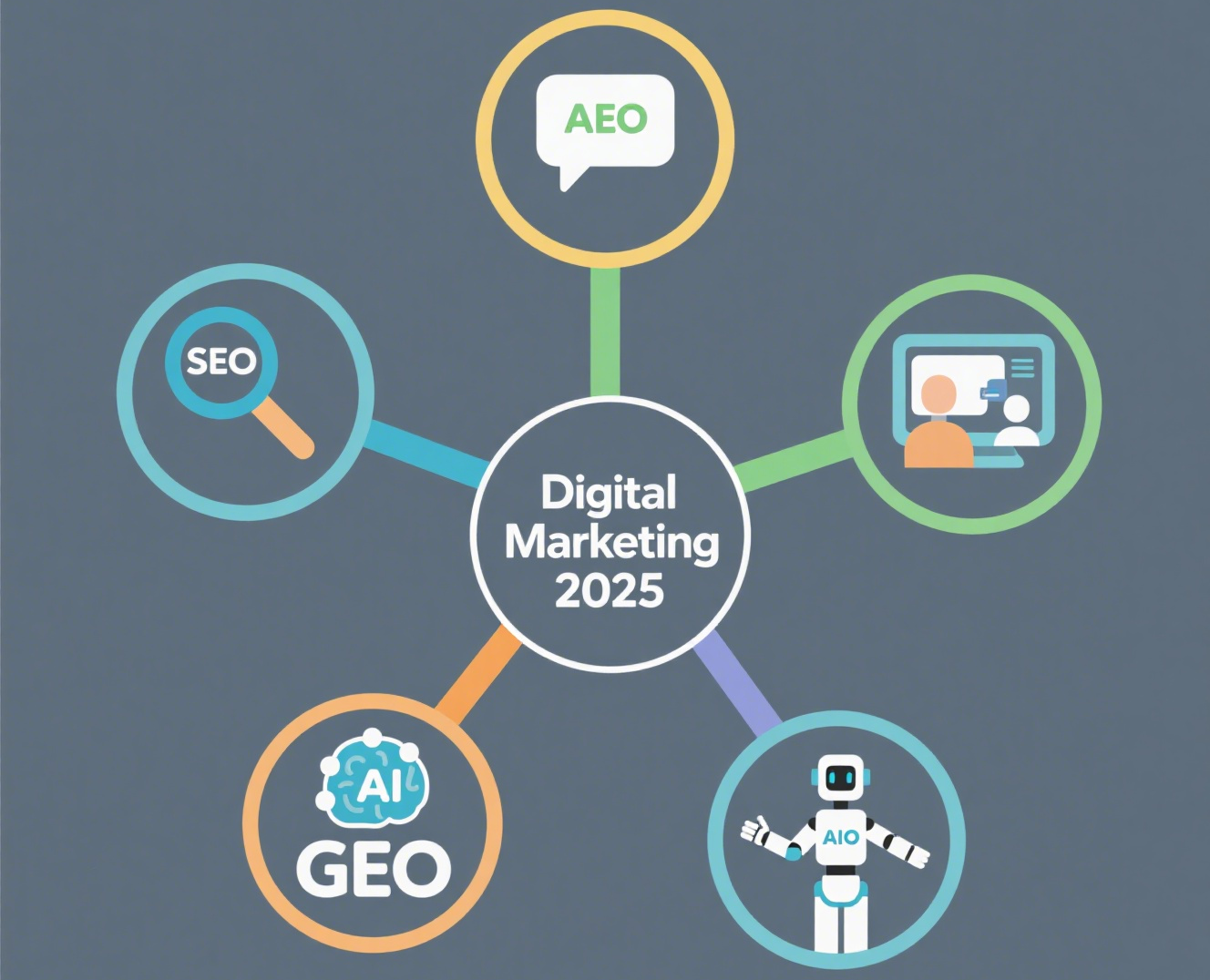
1. Core Definitions of the Five Optimization Strategies
First, let's clearly define each strategy:
-
SEO (Search Engine Optimization):
This is the foundational technique focused on improving a website's ranking in traditional search engines like Google through keywords, links, and technical fixes. In 2025, it remains the bedrock of all other optimizations. -
AEO (Answer Engine Optimization):
AEO aims to directly answer user questions to appear in "Position Zero" results like featured snippets and knowledge panels, and to power voice search answers. It heavily utilizes structured data (Schema) and FAQ modules. -
GEO (Generative Engine Optimization):
The newest frontier, GEO focuses on getting your content cited and recommended in AI-generated search results (like ChatGPT or Google SGE). It relies heavily on E-E-A-T (Experience, Expertise, Authoritativeness, Trustworthiness), in-depth long-form content, and local optimization. -
SXO (Search Experience Optimization):
SXO is the perfect marriage of SEO and UX (User Experience). It prioritizes site performance, interactive design, call-to-action (CTA) placement, and conversion rate optimization. Its core goal is to enhance the user's entire on-site journey. -
AIO (AI Optimization):
AIO aims to make your content friendly not just for humans, but also for AI tools and machines. It uses structured content, semantic tags, and clear layouts to make your content easy for AI to crawl, understand, summarize, and repurpose.
2. SEO vs AEO vs GEO vs SXO vs AIO: A Comprehensive Comparison
To better visualize the differences and connections, here is a comprehensive comparison table:
| Aspect | SEO (Foundation) | AEO (Answers) | GEO (AI Citations) | SXO (Experience) | AIO (AI-Friendly) |
| Core Definition | Rank on search engines | Provide direct answers | Be a source for AI search | Optimize user experience | Create machine-readable content |
| Primary Focus | SERP visibility | Zero-click results | AI summaries & local presence | Engagement, user retention | AI content utilization |
| Desired Outcome | More website traffic | Featured snippet presence | Mentions in AI/local search | More user actions/conversions | Content is scalable by AI |
| Key Tools | Basic SEO tools | Schema, voice optimization | GMB, E-E-A-T | UX analytics, A/B testing | Semantic SEO, clean code |
| Target Audience | All search users | Quick answer seekers | Local & AI search users | Website visitors | AI tools and users |
| Content Format | Blogs, landing pages | FAQs, snippets | Long-form, conversational | UX-first design | Structured content |
| Core Strategy | Keywords, backlinks | Snippet optimization, Schema | AI + Local SEO | Design & flow optimization | Entity SEO, semantics |
| Role of AI | AI as an assistant tool | AI as the answer provider | AI as the content generator | AI tracks user behavior | AI as the reader/repurposer |
| Role in 2025 | Still crucial | Increasingly valuable | Rising fast | Always vital | Growing fast |
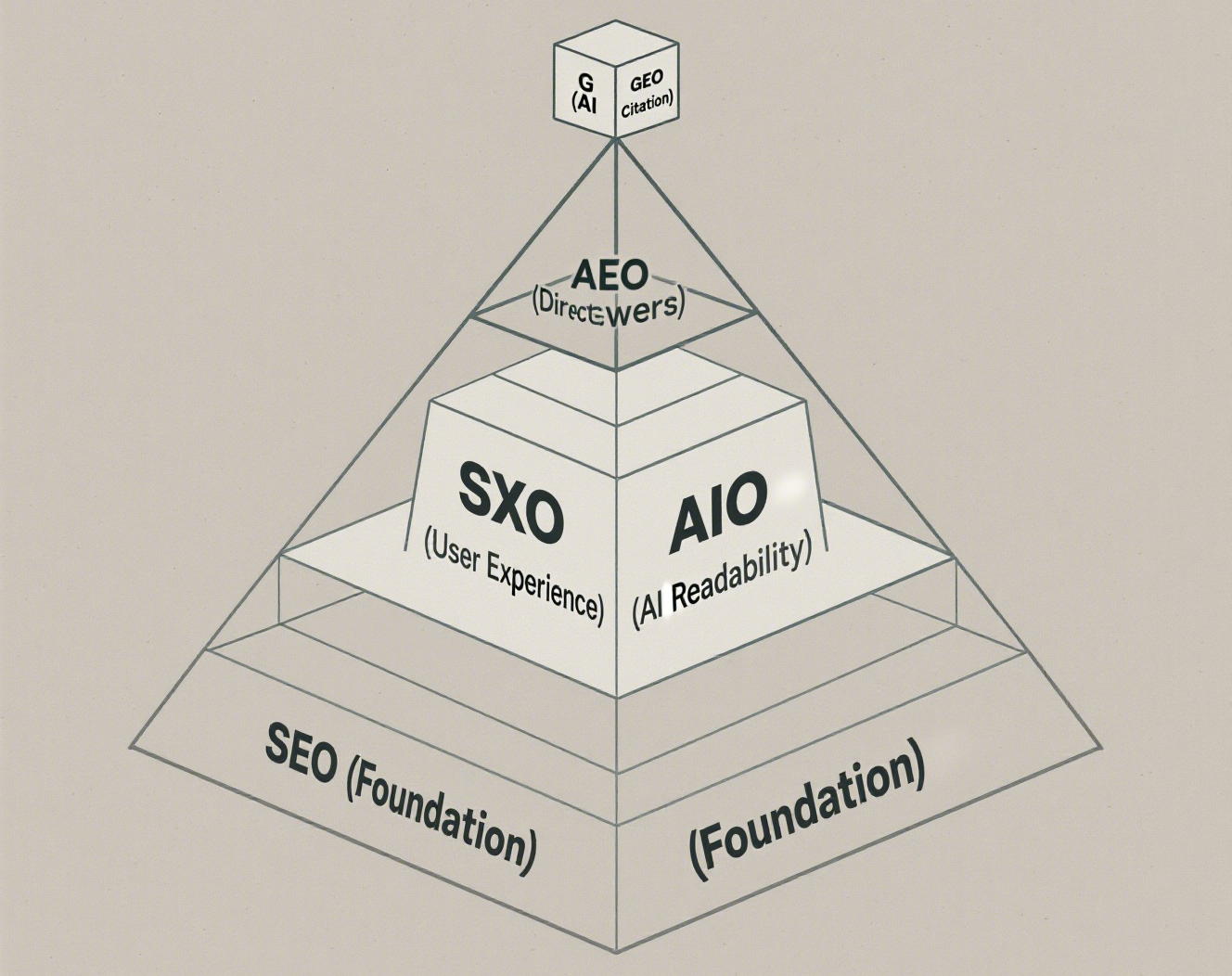
3. The Integrated Strategy for 2025 and Beyond
In the future, these optimization strategies will not exist in silos. A successful digital marketing plan will require a synergistic approach that integrates all five.
-
Start with SEO as the Base: All optimizations depend on a technically sound, relevant website, which is the core work of SEO.
-
Fuse AEO and AIO: Create structured, semantic content that is both easily understood by AI tools (AIO) and directly answers user questions (AEO).
-
Aim for the GEO Summit: On a strong foundation of SEO and AIO, strive to be cited by generative AI by building E-E-A-T and creating in-depth content—the goal of GEO.
-
Amplify All Results with SXO: Regardless of where your traffic comes from, a great user experience (SXO) is the final, critical step in converting them into loyal customers. A slow, confusing website will waste all your front-end optimization efforts.
Key Recommendations:
-
A Hybrid Strategy is King: Combine SEO with AEO and AIO to achieve maximum reach.
-
Embrace E-E-A-T and Structure: This is crucial for making your content compatible with and trusted by AI.
-
User Experience is Paramount: Keep your site fast and smooth for better SXO returns.
-
Keep Content Evergreen: Regularly update old content to keep it fresh and relevant for both AI and users.
Conclusion
From SEO to AIO, the digital marketing optimization landscape is expanding. Understanding the differences and connections between SEO, AEO, GEO, SXO, and AIO is key for every marketer to remain competitive in 2025. The question is no longer which one to choose, but rather how to skillfully weave them together to build a comprehensive, three-dimensional, and future-proof digital marketing strategy.
FAQ (Frequently Asked Questions)
-
Q1: For a beginner, which "O" should I start with?
A: Without a doubt, you should start with SEO. SEO is the foundation for all other optimization strategies. Only after you understand the fundamentals of keywords, site structure, and link building can you effectively learn and apply more advanced strategies like AEO and GEO. -
Q2: What is the essential difference between GEO and AEO?
A: The essential difference lies in how the answer is generated. The goal of AEO is for your content to become the answer directly (e.g., Google pulls a paragraph from your site as a featured snippet). The goal of GEO is for an AI to cite your content as a source of information when it generates its own new, synthesized answer. GEO's requirements are higher, demanding exceptional authority and depth. -
Q3: SXO (Search Experience Optimization) sounds a lot like CRO (Conversion Rate Optimization). How are they different?
A: They are closely related but have a different focus. CRO has a very specific goal: to improve a single conversion action (like a download, sign-up, or purchase). SXO is broader; it focuses on the user's entire journey and experience on the site, including ease of use, content satisfaction, and brand trust. A great SXO will naturally lead to a higher CRO. -
Q4: In 2025, if my budget is limited, where should I invest first?
A: If your budget is limited, I recommend investing 80% of your resources into high-quality content creation and an excellent user experience (SXO). This is because these two areas are the common denominator for all optimization strategies. An in-depth, authoritative, well-structured article simultaneously satisfies the requirements of SEO, AEO, GEO, and AIO, while a fast, easy-to-use website (SXO) ensures none of your efforts go to waste. It's the most efficient investment you can make.


